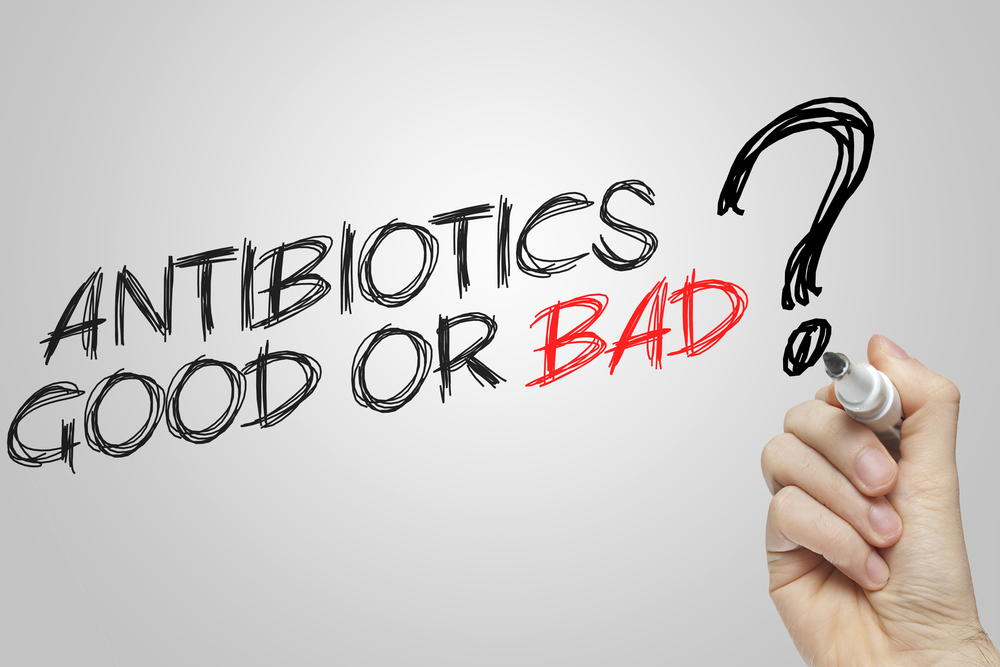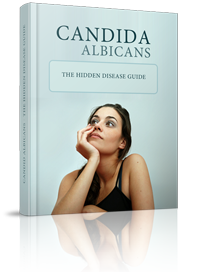Vaginal Yeast Infection
A Candida albicans overgrowth is one of the main causes of a vaginal yeast infection. Follow the suggestions below to cure your yeast infection and learn how to prevent yeast infections in the future.
Almost 75% of women will experience a yeast infection in their life - nearly 50% will have two or more.
There are several conditions that can lead to the vaginal itching and burning commonly referred to as a vaginal yeast infection - fungal vaginitis, bacterial vaginosis, vaginal dermatitis, Trichomoniasis, gonorrhea, and chlamydia.
This page discusses fungal vaginitis.
- What is a yeast infection?
- What are the yeast infection symptoms?
- Should I call my doctor if I think I have a yeast infection?
- How is a yeast infection diagnosed?
- What causes yeast infections?
- Can I get a yeast infection from having sex?
- What is the best treatment of yeast infections?
- What is the best yeast infection medicine?
- How can I prevent yeast infections?
- What should I do if I have chronic yeast infections?
- For more information
Other Types of Vaginal Infections
- Bacterial Vaginosis
- Vaginal Dermatitis
- Sexually Transmitted Infections
Trichinomiasis
Gonorrhea
Chlamydia
What is a Vaginal Yeast Infection?
The true "yeast" infection is fungal vaginitis.
It has many names - vaginal yeast infection, vaginal candidiasis, vaginal thrush, vulvitis, vulvovaginitis, vulvovaginal candidiasis, vaginitis, yeast vaginitis, yeast overgrowth, Candida yeast infection, Monilia and Monilial vaginitis.
It is caused by a Candida overgrowth in the vagina.
Candida albicans is a yeast normally found throughout your body - in your vagina, in your mouth, in your gut and on your skin. It is usually kept in balance by beneficial bacteria.
Sometimes this natural balance is upset and the Candida can grow out of control, leading to systemic Candidiasis. One of the symptoms of Candidiasis is a vaginal yeast infection.
Most women believe that a yeast infection is confined to their vaginas. As you have just learned, it is not a condition that exists by itself but rather a symptom of a system wide condition.
Treating the yeast infection symptoms does not get rid of the Candida overgrowth. It merely removes the Candida from your vagina and leaves it roaming free throughout the rest of your body where it can lead to many chronic illnesses.
Vaginal Yeast Infection Symptoms
How do you know if you have an infection?
Vaginitis is usually accompanied by these symptoms:
- Vaginal itching
- Vaginal burning
- Soreness of the vaginal area
- Redness of the vulva
- Pain or burning when passing urine
- Painful intercourse
- Abnormal vaginal discharge
- Ranges from a slightly watery, white discharge to a thick, white, chunky discharge (like cottage cheese)
- May have an unusual or unpleasant vaginal odor
If you have these vaginal yeast infection symptoms, then it is likely that you have a vaginal yeast infection. Keep reading to discover the best treatment of yeast infection.
Is a Doctors Visit Required?
There are many conditions that have the same symptoms as a yeast infection. You should visit a doctor for treatment if:
- This is your first yeast infection
- You've already tried a home treatment for yeast infection and symptoms persist
- You're pregnant
- You've had other types of vaginal or urinary tract infections
- You have a weakened immune system
- You're with a new sex partner or have had multiple sex partners
Do not use any vaginal treatment for a few days before you go to the doctor because it can make it more difficult to diagnose a vaginal infection.
You should go to a hospital immediately if you also experience:
- a fever
- chills
- nausea
- vomiting
- abdominal or back pain
- bloody discharge
- difficult or increased urination
These may be signs of a serious condition such as kidney infection, appendicitis, or pelvic inflammatory disease.
Vaginal Yeast Infection Diagnosis
Your doctor will do a pelvic exam to look for swelling of the skin of the vulva, in the vagina, and on the cervix. They may also use a swab to take a fluid sample of your vaginal discharge.
This will be examined with a microscope in a procedure called a wet mount and KOH test. A Candida overgrowth will show up on the microscope.
Your doctor may also choose to do other tests to find other causes of your symptoms.
What Causes Vaginal Yeast Infections?
There are many things that can upset the natural balance between yeast and the beneficial bacteria. Anything that kills off the beneficial bacteria can lead to vaginitis.
Some of the more common causes are:
- Eating lots of processed foods, especially sugar and refined carbs
- Excess alcohol consumption
- Chronic stress
- Exposure to environmental toxins
- Drinking tap water that contains chlorine or fluoride
Hormonal changes are also what causes vaginal yeast infections. These hormonal changes can be caused by pregnancy, diabetes, obesity, or the use of pharmaceutical drugs such as:
- antibiotics
- corticosteroid medications
- birth control pills
- hormone replacement therapy (HRT)
Now you know what causes yeast infections. Avoid the causes to prevent yeast infections in the future. You also need to avoid them in order to treat your existing infection.
Vaginal Yeast Infection and Sex
Yeast infections can be passed between sexual partners so both you and your partner need to be treated at the same time to prevent re-infection.
Not only can male partners get a system wide Candida overgrowth, they can get a penis yeast infection known as candida balanitis.
The proper way to cure male yeast infection is for him to follow the same natural cure for yeast infection that you do.
Treatment of Vaginal Yeast Infection
Most infections are systemic yeast infections rather than a localized problem. Therefore there are two ways of treating vaginal yeast infections:
The quick relief is just that - quick relief of the symptoms. Sometimes the symptoms may subside altogether but the Candida is still present in your body.
It will be waiting for just the right moment to create another vaginal yeast infection. It may also start wreaking havoc on the rest of your body.
Choose one or all of the yeast infection home remedies to quickly rid yourself of vaginal itching, burning and irritation.
Be sure you also follow the natural cure for yeast infection to rid yourself of the Candida overgrowth once and for all.
Yeast Infection Home Remedies for Quick Symptom Relief
- Apply a cold washcloth to the area
- Sit in a warm bath
- Use a finger to insert plain yogurt into your vagina
- Dip a tampon in plain yogurt and insert into your vagina
- Freeze the yogurt covered tampon before inserting
- Insert one Boric acid powder capsule into your vagina each morning and evening for 3-7 days
- Use a retention douche with bentonite clay, Pau D'Arco tea, plain yogurt, tea tree oil and goldenseal. Douche two times a day for seven to 10 days.
- Soak a tampon with diluted tea tree oil (use a solution of one and a half tablespoons of tea tree oil and one cup of water) and keep it in your vagina overnight.
- Peel a fresh clove of garlic, dip in olive oil to coat and wrap in gauze or cheesecloth. Leave some extra on the end to make for easy extraction. Insert into your vagina and leave it in for a few hours. Repeat up to four times a day.
- Follow the steps to keep your vagina healthy.
Permanent Natural Cure for Yeast Infection
To permanently treat and prevent yeast infections, you need to follow a Six Step Program.
The steps include many lifestyle changes - eating a healthy diet, avoiding environmental toxins and taking supplements. The Six Steps are all meant to be performed at the same time.
The Six Steps to Health
- Remove the Causes
- Starve the Candida
- Kill the Candida
- Repair the Damage
- Detox Your Body
- Replace the Good Bacteria
Use the quick yeast infection relief steps to ease the symptoms and the permanent yeast infection treatment steps to permanently rid yourself of yeast infections!
Vaginal Yeast Infection Medicine
As mentioned above, most infections are systemic yeast infections rather than a localized problem. Because of this there are two ways of of looking at yeast infection medicine:
The quick symptom relief is useful in getting quick relief of the itching and burning. However you need to perform the permanent cure to ensure that you are free from yeast infections for life.
Treating Yeast Infections - Quick Relief
The quick relief medicine is usually an anti-fungal cream or suppository. The treatment time will vary from one to seven days.
It will usually kill the yeast that is present in your vagina but it cannot kill the Candida present throughout your body.
The Candida will be waiting for just the right moment to create another vaginal yeast infection. It may also start wreaking havoc on the rest of your body.
Using a yeast infection medicine for quick relief is the pharmaceutical equivalent of using the yeast infection home remedies listed above. They are both able to quickly get rid of vaginal itching, burning and irritation.
However you need to choose a permanent treatment to rid yourself of the Candida overgrowth altogether.
Yeast Infection Cures - Permanent
To ensure you have taken care of the Candida overgrowth in your body and prevent yeast infections in the future, you need to take a permanent yeast infection medicine.
They are oral anti-fungals in a pill form. They usually do a good job of killing the Candida throughout your body when used as a part of the Six Step Treatment Program.
They are the pharmaceutical equivalent to the natural cure for yeast infection listed above.
The main drawback to the yeast infection pills is that most pharmaceutical antifungals harm the liver.
If your doctor prescribes an antifungal, make sure to ask if liver function tests are needed before, during and after the treatment.
Since all pharmaceuticals have potentially dangerous side effects, I always recommend using the natural cure for yeast infection listed above.
How Can I Prevent Yeast Infections?
In order to prevent yeast infections, you must do two things:
You keep your immune system healthy by avoiding all of the things that cause a Candida albicans overgrowth.
Here is a brief summary of the things you need to do for your immune system:
Keep Your Immune System Healthy
- Eat a healthy, well balanced diet
- Avoid processed foods, especially sugar and refined carbs
- Take antibiotics only when prescribed by your doctor
- Take probiotics and eat fermented food daily - especially when you are on antibiotics
- Get plenty of sleep
- Exercise regularly
- Don't smoke
- Don't drink excessively
- Avoid environmental toxins
- Manage your stress levels
- Keep your blood sugar levels well controlled if you have diabetes
- Use condoms to avoid catching sexually transmitted diseases
Most of the time a strong immune system is all you need to prevent yeast infections.
However it is still possible to get a vaginal yeast infection if the conditions in your vagina are not healthy. Follow these tips for proper feminine hygiene:
Keep Your Vagina Healthy
- Keep the area clean and dry
- Expose to air as much as possible
- Wear cotton underwear rather than synthetics
- Change underwear daily
- Avoid underwear at bedtime
- Only use pantyhose with a cotton crotch
- Wear pantyhose for as short a time as possible
- Change out of wet swimsuits as soon as possible
- Change out of wet sports clothes as soon as possible
- Change pads and tampons regularly (at least every three to four hours)
- Don't get into the habit of wearing panty liners during the day
- Avoid tight fitting clothes like tight jeans
- Avoid layering clothes
- Avoid chemicals and irritants
- Wash underwear in hot water with pure soap and double rinse
- Avoid using perfumed or deodorized pads and tampons
- Never douche unless it is specifically prescribed by a doctor
- Avoid using soaps, bubble baths, bath salts, perfumes and perfumed talcs around your vagina
- Never use anything harsh such as disinfectants - even diluted, near your vagina
- Always wipe from the front to the back after going to the toilet
- Don't use perfumed toilet paper
Keep your immune system strong and your vagina healthy in order to heal your existing infection and prevent yeast infections in the future.
Chronic Vaginal Yeast Infections
About 5% of women develop chronic vaginal yeast infections - otherwise known as Recurrent Vulvovaginal Candidiasis (RVVC). Recurrent Vulvovaginal Candidiasis is defined as 4 or more recurring yeast infections in a 1-year period.
Chronic vaginal yeast infections are more common in women who have systemic Candidiasis, including those with diabetes or a weakened immune system.
Many medical experts believe there is no medical illness that would predispose women to recurring yeast infections. The reason for this is that they won't accept systemic Candidiasis as a disease.
After reading this page you should not only know what causes chronic vaginal yeast infections but how to treat them as well.
Bacterial Vaginosis
Bacterial vaginosis is caused by an overgrowth of the bacteria Gardnerella vaginitis.
It causes the same burning with urination as yeast infection.
The difference is that itching is uncommon and the discharge is white or gray and smells like fish.
It is usually treated with the antibiotics clindamycin or metronidazole. Taking probiotics will help prevent recurrences.
Vaginal Dermatitis
Dermatitis is the medical term for a rash.
It causes the same burning, soreness and redness as yeast infection.
The main difference between dermatitis and yeast infection is the lack of itching or discharge.
Dermatitis is usually caused by irritation or allergies.
Irritation is a result of friction from many sources:
- panties (especially G-strings)
- panty liners and pads
- pantyhose
- gym clothes
- jeans
- sex
Many chemicals can lead to an allergic reaction:
- The perfumes and artificial colors in toilet paper
- The perfumes and preservatives in soaps, cleansers and bath additives
- Talcum powder
- Certain brands of personal lubricants
- Certain brands of hemorrhoid creams
- Certain brands of vaginal creams
- Latex condoms
Dermatitis is made worse by heat, wetness and friction. Since vaginas are naturally wet and warm it can take up to six months to treat a severe case.
Treatment begins by keeping your vagina healthy. You should also use a coconut oil moisturizer along with hydrocortisone cream. Severe cases may require a prescription steroid cream.
Trichinomiasis
Trichinomiasis is a sexually transmitted infection caused by the protazoa Trichomonas vaginalis.
It causes the same pain, burning and itching as yeast infection.
The difference is that the discharge is yellow-green, itchy, frothy and fishy-smelling.
Trichinomiasis is treated with one dose of the prescription antiprotozoal medication metronidazole.
Gonorrhea
Gonorrhea is a sexually transmitted infection caused by the bacterium Neisseria gonorrhoeae.
It causes a vaginal discharge similar to yeast infection.
The difference is that is can also cause pelvic pain. Up to 50% of women show no symptoms.
If left untreated, it can lead to pelvic inflammatory disease (PID) or spread throughout the body attacking joints or heart valves.
It is treated with antibiotics such as ceftriaxone, azithromycin or doxycycline. Retesting is recommended three months after treatment.
Chlamydia
Chlamydia is a sexually transmitted infection caused by the bacterium Chlamydia trachomatis.
It can create an abnormal discharge, pain when passing urine and painful intercourse just like a yeast infection.
The difference is that is can also cause abnormal vaginal bleeding, abdominal pain, fever, and the urge to urinate more often than usual. Up to 80% of women show no symptoms.
If left untreated, it can lead to pelvic inflammatory disease (PID), reproductive problems, arthritis and blindness.
It is treated with antibiotics such as azithromycin, doxycycline, erythromycin, ofloxacin or amoxicillin.
More Information About Vaginal Yeast Infection
To learn more about Vaginal Yeast Infection, check out one of these books.
eBooks - Download Instantly
- Davidson, Rodney (2009) Candida Albicans - The Hidden Disease. eBook. Download Now
- Allen, Linda (2004) Yeast Infection No More. eBook. Download Now
Hardcover and Paperback Books
- Crook, William G. MD (1999) The Yeast Connection Handbook. Square One Publishers. Buy Now
- Crook, William G. MD & Jones, Marjorie (1989) The Yeast Connection Cookbook. Professional Books/Future Health. Buy Now
- Martin, Jeanne Marie (2000) Complete Candida Yeast Guidebook. Three Rivers Press. Buy Now
Home > Vaginal Yeast Infection (Vaginitis)







New! Comments
Have your say about what you just read! Leave me a comment in the box below.